JUMP TO TOPIC [show]
Disk Method – Definition, Formula, and Volume of Solids
One of the significant applications of integral calculus is its role in calculating the volume of a three-dimensional figure. Through different techniques such as the disk method, we now have the tools to approximate the volumes of these unique solids through calculus. Solids of revolutions and the methods of calculating their volumes are commonly used in engineering and manufacturing systems.
The disk method allows us to find the solids of the revolution’s volumes. The disk method depends on revolving the curve with respect to the
In our discussion, you’ll learn what makes the disk method unique. We’ll also do a quick recap of what solids of revolution are. We’ll also show you the conditions and steps we need to remember when implementing the disk method to obtain the solids of the revolution’s volume.
What is the disk method?
The disk method allows us to calculate the volume of solids of revolution using cylindrical disks. Here’s a mental exercise: imagine a rectangle with one side adjacent to an axis. Revolve the rectangle around (at
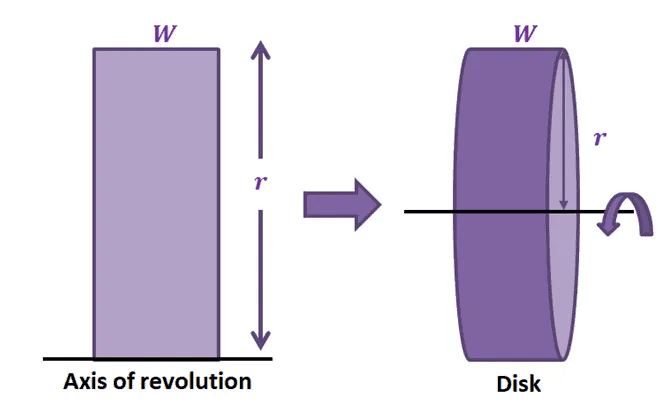
In fact, the volume of the resulting cylinder is equal to
Let’s extend this idea to revolving cross-sections about a given axis. This means that
Disk method definition
The disk method makes use of a cylindrical disk to estimate the volume of the solid of the revolution formed. Here’s how the disk of the solid of revolution formed by rotating the region under the curve of
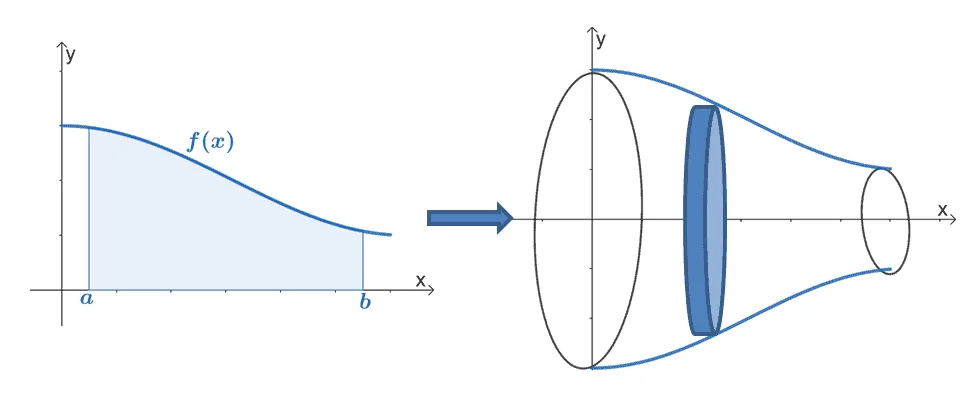
Let’s say we divide the interval,
When the function,
There are instances, however, when we need to rotate a curve with respect to the
These are the two equations representing the solid’s volume. We only depend on orientation of the rotation. In the next section, we’ll be breaking down the steps of the disk method and learn how to apply these steps to find volume of solid of revolution.
How to use the disk method?
Use the guidelines below when using the disk method to estimate the solids of revolution’s volume:
- Identify the axis of revolution and set up the appropriate definite integral for the volume.
- When needed, sketch the disk and the solid of revolution using
- Apply appropriate integral properties and techniques to find the antiderivative of
- Evaluate the definite integral. Make sure that the volume is positive.
Why don’t we go ahead and refresh what we know of the two possible volumes? We’ve included a summary of the formulas for the disk method so you can easily access them when working on the problems that follow.
Disk method formula
Here’s a summary of the disk method formula highlighting how we calculate the volume depending on the axis of revolution.
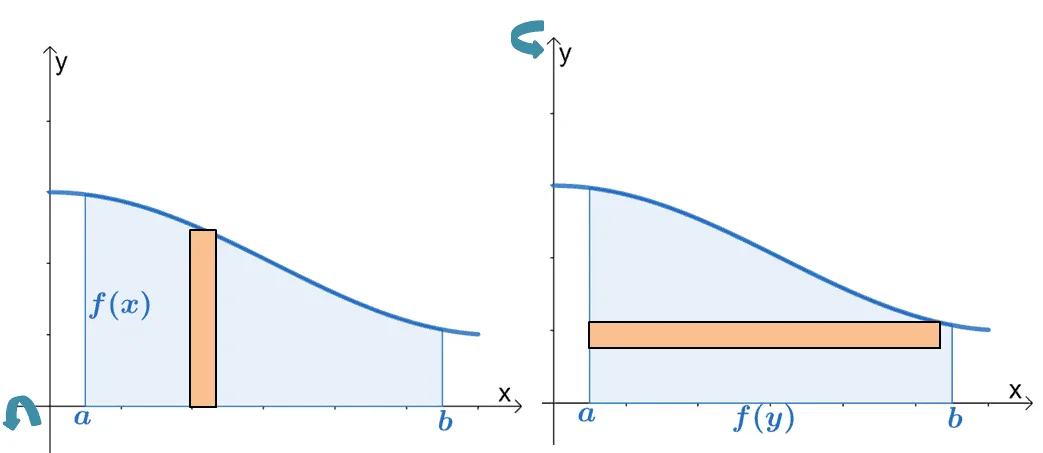
Horizontal Revolution | Vertical Revolution |
Apply this formula to calculate the volume of a region,
Let’s try to find the volume of the solid formed by rotating
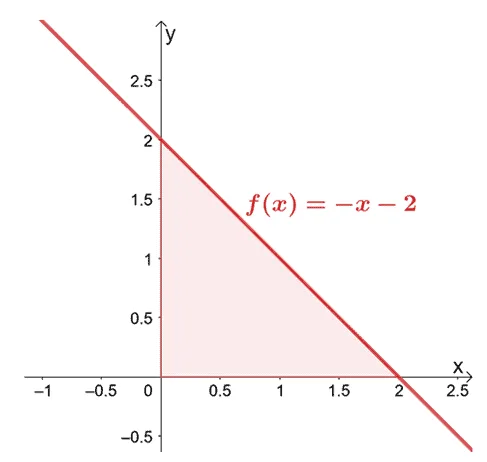
Since we’re rotating over the
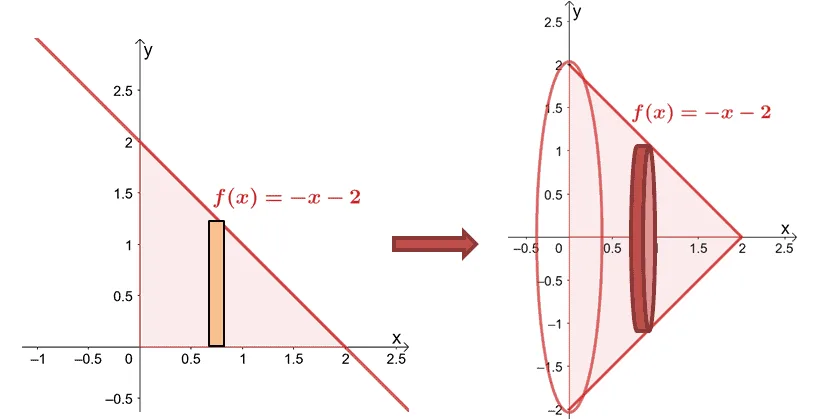
Let’s calculate the volume using the formula,
This means that the solid’s volume is
There are instances when it’s convenient to integrate an expression with respect to
Example 1
Calculate the volume of the solid formed by revolving the region of the curve of
Solution
We’ll sketch the curve of
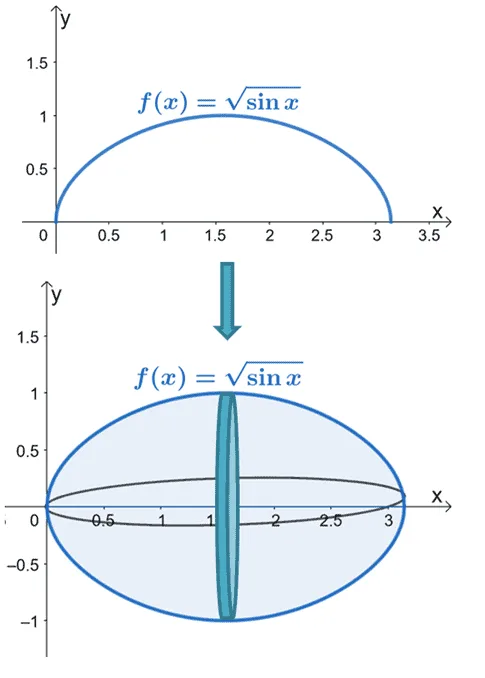
Find the volume of
Integrate the expression by using the antiderivative formula,
This means that the volume of the solid formed is equal to
Example 2
Find the volume of the solid formed by revolving the region of the curve of
Solution
Since we’re revolving the curve over the vertical axis, let’s find the expression of the curve in terms of
Let’s sketch the region under the curve of

Here’s the solid formed by rotating the curve over the
Apply the power rule,
This means that the volume of the solid obtained by rotating
Practice Questions
1. Calculate the volume of the solid formed by revolving the region of the curve of
2. Calculate the volume of the solid formed by revolving the region of the curve of
3. Calculate the volume of the solid formed by revolving the region of the curve of
4. Find the volume of the solid formed by revolving the region of the curve of
5. Find the volume of the solid formed by revolving the region of the curve of
6. Find the volume of the solid formed by revolving the region of the curve of
Answer Key
1.
2.
3.
4.
5.
6.
Images/mathematical drawings are created with GeoGebra.
